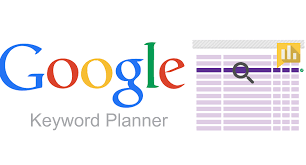Unlocking the Power of Google Ads Keyword Planner
In the world of online advertising, one tool stands out as a game-changer: Google Ads Keyword Planner. This powerful tool has revolutionized the way businesses identify and target keywords for their advertising campaigns, helping them reach their target audience with precision and efficiency.
So, what exactly is Google Ads Keyword Planner? Simply put, it is a free tool provided by Google that allows advertisers to research and analyze keywords relevant to their products or services. It provides valuable insights into search volume, competition levels, and suggested bid amounts for each keyword, helping advertisers make informed decisions about which keywords to target.
One of the key features of Google Ads Keyword Planner is its ability to generate new keyword ideas. By entering a few seed keywords or a website URL related to your business, the tool will generate a list of relevant keywords that you can consider targeting in your campaigns. This feature is particularly useful for businesses looking to expand their keyword portfolio or discover untapped opportunities.
Moreover, Google Ads Keyword Planner provides detailed data on search volume trends over time. This information helps advertisers understand how keyword popularity fluctuates throughout the year, allowing them to tailor their campaigns accordingly. For example, if you own an online store specializing in swimwear, you might notice that search volume for swimwear-related keywords peaks during the summer months. Armed with this knowledge, you can allocate your advertising budget more effectively during those peak periods.
Another valuable aspect of this tool is its competition analysis feature. It provides insights into how competitive each keyword is by assigning it a low, medium, or high competition level. This information allows advertisers to gauge the difficulty of ranking for specific keywords and adjust their bidding strategy accordingly. By targeting less competitive keywords with lower bid amounts, businesses can optimize their advertising spend while still reaching their target audience effectively.
Google Ads Keyword Planner also offers estimated bid amounts for each keyword based on historical data. This information helps advertisers set realistic budgets for their campaigns and avoid overspending. By understanding the estimated bid amounts, businesses can allocate their resources strategically and maximize the return on investment (ROI) of their advertising efforts.
Furthermore, Google Ads Keyword Planner seamlessly integrates with Google Ads, making it easy for advertisers to import their selected keywords directly into their campaigns. This integration streamlines the process, saving time and effort in manually transferring keyword lists between platforms.
In conclusion, Google Ads Keyword Planner is an indispensable tool for businesses looking to optimize their online advertising campaigns. With its ability to generate new keyword ideas, provide search volume trends, analyze competition levels, and estimate bid amounts, this tool empowers advertisers to make data-driven decisions that yield better results.
If you haven’t already explored the power of Google Ads Keyword Planner, now is the time to do so. Unlock its potential and take your online advertising campaigns to new heights by harnessing the insights it provides. Remember, in today’s competitive digital landscape, strategic keyword targeting can make all the difference in reaching your target audience effectively and maximizing your advertising ROI.
7 Essential Tips for Maximizing Google Ads Keyword Planner
- Use the keyword planner to research potential keywords and ad groups for your Google Ads campaigns.
- Utilize the “Keyword Ideas” tab to get a list of related keywords and their search volumes.
- Take advantage of the “Ad Group Ideas” tab to group similar keywords together into ad groups.
- Pay attention to the competition levels for each keyword, as it can help you decide which ones are worth targeting in your campaigns.
- Make sure to check the accuracy of your keyword data by comparing it with other sources like Google Trends or SEMrush Keyword Research Tool.
- Take advantage of negative keywords to exclude irrelevant searches from appearing in your ads and save money on wasted clicks/impressions from unqualified audiences who won’t convert anyway!
- Don’t forget about using long-tail keywords that are more specific than generic terms; they often have lower competition levels and higher conversion rates since they usually indicate more intent on behalf of the searcher!
Use the keyword planner to research potential keywords and ad groups for your Google Ads campaigns.
Maximize Your Google Ads Campaigns with Keyword Planner
When it comes to running successful Google Ads campaigns, one tip stands out as a game-changer: utilizing the power of the Google Ads Keyword Planner. This invaluable tool empowers advertisers to research potential keywords and ad groups, helping them optimize their campaigns for maximum impact.
The first step in any successful advertising campaign is identifying the right keywords. With the Google Ads Keyword Planner, you can easily research and discover relevant keywords that align with your business offerings. By entering a few seed keywords or your website URL, this tool generates a list of potential keywords that are highly relevant to your industry.
But it doesn’t stop there. The Keyword Planner goes beyond just providing keyword suggestions. It also provides valuable insights into search volume trends and competition levels for each keyword. This information allows you to gauge the popularity and competitiveness of specific keywords, enabling you to make informed decisions about which ones to prioritize in your campaigns.
Additionally, the Keyword Planner helps you organize your keywords into logical ad groups. By grouping related keywords together, you can create targeted ad campaigns that resonate with your audience and increase the chances of conversion. This strategic approach ensures that your ads are shown to the right people at the right time, maximizing their effectiveness.
Moreover, by using the Keyword Planner’s estimated bid amounts feature, you can plan your budget more effectively. Understanding how much competition there is for specific keywords helps you set realistic bid amounts that align with your advertising goals. This way, you can optimize your spending and achieve a better return on investment (ROI).
The integration between Google Ads and Keyword Planner makes it seamless to import selected keywords directly into your campaigns. This eliminates the need for manual data transfer and saves you time and effort in setting up your ads.
In conclusion, if you want to take your Google Ads campaigns to new heights, make sure to utilize the power of Google Ads Keyword Planner. Researching potential keywords and ad groups using this tool allows you to optimize your campaigns, increase visibility, and attract the right audience. By leveraging the insights provided by Keyword Planner, you can make data-driven decisions that lead to more successful advertising efforts.
So don’t miss out on this invaluable resource. Take advantage of the Google Ads Keyword Planner to uncover potential keywords, analyze competition levels, and organize your campaigns effectively. Your business will thank you for it as you unlock the full potential of Google Ads and reach new heights in online advertising success.
Utilize the “Keyword Ideas” tab to get a list of related keywords and their search volumes.
Maximizing Your Keyword Research with Google Ads Keyword Planner
When it comes to running successful online advertising campaigns, keyword research is the foundation for targeting the right audience. And if you’re using Google Ads Keyword Planner, there’s a nifty feature that can take your keyword research to the next level: the “Keyword Ideas” tab.
The “Keyword Ideas” tab within Google Ads Keyword Planner is a goldmine for uncovering related keywords and understanding their search volumes. It allows you to expand your keyword portfolio and discover new opportunities that may have been overlooked.
Here’s how to make the most of this feature:
- Start with a seed keyword: Begin by entering a seed keyword that is relevant to your business or campaign objective. For example, if you’re promoting a fitness app, you might start with “fitness” or “exercise.”
- Explore related keywords: Once you’ve entered your seed keyword, navigate to the “Keyword Ideas” tab. Here, you’ll find an extensive list of related keywords that are relevant to your seed keyword. These keywords are generated based on actual search data from users.
- Analyze search volumes: Alongside each keyword suggestion, you’ll see its corresponding search volume data. This information gives you insights into how often users are searching for those specific keywords on Google. By analyzing search volumes, you can prioritize keywords with higher search volumes for maximum visibility.
- Refine your keyword selection: Review the list of related keywords and select those that align closely with your campaign objectives or target audience. Consider factors such as relevance, competition levels, and estimated bid amounts when making your choices.
- Expand further: To delve even deeper into specific topics or niches within your industry, click on individual keywords from the list provided in the “Keyword Ideas” tab. This will generate additional suggestions related to that particular keyword.
By utilizing the “Keyword Ideas” tab in Google Ads Keyword Planner, you can broaden your understanding of the keyword landscape and gain valuable insights into search volumes. This feature empowers you to make informed decisions about which keywords to target in your campaigns, ensuring that you’re reaching the right audience at the right time.
Remember, effective keyword research is a crucial step in optimizing your online advertising efforts. By expanding your keyword portfolio and understanding search volumes, you can refine your targeting strategy and maximize the impact of your campaigns.
So, dive into the “Keyword Ideas” tab within Google Ads Keyword Planner and unlock a world of related keywords waiting to be discovered. Take advantage of this powerful tool to supercharge your keyword research and drive better results for your online advertising campaigns.
Take advantage of the “Ad Group Ideas” tab to group similar keywords together into ad groups.
Maximizing Your Google Ads Campaigns with Ad Group Ideas
When it comes to running successful Google Ads campaigns, organization is key. One powerful feature within the Google Ads Keyword Planner that can help you achieve better organization and improve your campaign’s performance is the “Ad Group Ideas” tab.
The “Ad Group Ideas” tab in Google Ads Keyword Planner allows you to group similar keywords together into ad groups. This feature not only helps you keep your campaigns organized but also ensures that your ads are highly relevant to the keywords you’re targeting, which can lead to higher click-through rates and conversions.
By using the “Ad Group Ideas” tab, you can streamline your campaign structure and create targeted ad groups based on themes or specific product categories. Let’s say you have an online clothing store, and you want to create separate ad groups for men’s shirts, women’s dresses, and children’s clothing. With this feature, you can easily identify related keywords for each category and group them together within their respective ad groups.
This level of organization has several benefits. First, it allows you to create more focused and tailored ads that directly address the needs and interests of your target audience. By grouping similar keywords together, you can craft compelling ad copy that resonates with users searching for those specific terms.
Secondly, organizing your campaign this way enables better control over your budget allocation. With separate ad groups for different product categories or themes, you can allocate your advertising budget more effectively by adjusting bids based on the performance of each group. This way, you ensure that your budget is being spent efficiently on the most relevant keywords within each ad group.
Additionally, grouping similar keywords together makes it easier to track and analyze the performance of specific themes or product categories. By having distinct ad groups for different keyword clusters, you can monitor metrics such as click-through rates (CTR), conversion rates, and return on investment (ROI) more accurately. This data allows you to identify which ad groups are performing well and which ones may require adjustments or further optimization.
To take advantage of the “Ad Group Ideas” tab in Google Ads Keyword Planner, simply navigate to the tool and enter your seed keywords or website URL. Once you generate a list of relevant keywords, switch to the “Ad Group Ideas” tab, where you’ll find suggestions for grouping those keywords together based on common themes or categories.
In conclusion, utilizing the “Ad Group Ideas” tab in Google Ads Keyword Planner can significantly enhance your campaign’s organization and effectiveness. By grouping similar keywords together into ad groups, you can create targeted ads, allocate your budget efficiently, and analyze performance with greater precision. So, don’t overlook this valuable feature – give it a try and unlock the full potential of your Google Ads campaigns.
Pay attention to the competition levels for each keyword, as it can help you decide which ones are worth targeting in your campaigns.
Maximizing Your Google Ads Success: Understanding Competition Levels in Keyword Planner
When it comes to running effective Google Ads campaigns, choosing the right keywords is crucial. And one valuable tip to keep in mind while using Google Ads Keyword Planner is to pay attention to the competition levels for each keyword. This insight can help you make informed decisions about which keywords are worth targeting in your campaigns.
The competition level of a keyword in Google Ads Keyword Planner refers to how many advertisers are bidding on that particular keyword. It is categorized as low, medium, or high. Understanding the competition levels can provide you with valuable insights into the difficulty of ranking for specific keywords and help you strategize accordingly.
If a keyword has a low competition level, it means that fewer advertisers are actively bidding on it. This presents an opportunity for your business to target those keywords with less competition, potentially leading to lower costs per click (CPC) and higher chances of visibility. By focusing on low-competition keywords, you can optimize your budget while still reaching your target audience effectively.
On the other hand, if a keyword has a high competition level, it indicates that many advertisers are actively bidding on it. While this may make it more challenging to rank for those keywords, it also signifies their potential value and relevance within your industry. High-competition keywords often indicate popular search terms with significant search volumes. If you have the resources and a well-planned strategy, targeting these competitive keywords can yield great results and boost your online visibility.
The medium competition level falls somewhere in between low and high. These keywords may have moderate search volumes and varying levels of advertiser competition. Evaluating medium-competition keywords requires careful consideration based on factors such as your budget, goals, and specific industry dynamics.
By paying attention to the competition levels for each keyword in Google Ads Keyword Planner, you gain valuable insights into the landscape of your industry’s advertising space. This knowledge empowers you to make informed decisions about which keywords to target, ensuring that your campaigns are optimized for success.
Remember, successful Google Ads campaigns are not just about targeting high-volume keywords. It’s about finding the right balance between competition levels, search volumes, and relevancy to your business. By incorporating low-competition keywords into your strategy, you can carve out a niche for your brand and reach potential customers who may have been overlooked by competitors.
So, take the time to analyze the competition levels in Google Ads Keyword Planner. It’s a simple yet effective way to refine your keyword targeting strategy and maximize the impact of your advertising campaigns.
Make sure to check the accuracy of your keyword data by comparing it with other sources like Google Trends or SEMrush Keyword Research Tool.
Enhance Your Keyword Research with Google Ads Keyword Planner
When it comes to running successful online advertising campaigns, accurate keyword data is crucial. While Google Ads Keyword Planner provides valuable insights, it’s always a good idea to cross-reference your findings with other reliable sources like Google Trends or the SEMrush Keyword Research Tool.
Google Trends is a powerful tool that allows you to explore the popularity of specific keywords over time. By comparing search volume trends, you can gain a deeper understanding of seasonal fluctuations or emerging trends within your industry. This information can help you refine your keyword strategy and align your campaigns with the most relevant and timely search queries.
Similarly, the SEMrush Keyword Research Tool offers comprehensive data and analysis for keyword research. It provides valuable metrics such as search volume, keyword difficulty, and competitive analysis. By leveraging this tool alongside Google Ads Keyword Planner, you can validate your keyword choices and gain additional insights into potential opportunities or gaps in the market.
Cross-referencing your keyword data across different platforms ensures that you have a well-rounded understanding of how certain keywords perform and how they align with user behavior. It helps you make informed decisions about which keywords to prioritize in your campaigns and allocate your advertising budget effectively.
Moreover, comparing data from multiple sources allows you to identify any discrepancies or outliers in the information provided by Google Ads Keyword Planner. While it remains a reliable tool, having additional sources for verification adds an extra layer of confidence to your keyword research process.
In summary, while Google Ads Keyword Planner is an invaluable resource for conducting keyword research, it’s essential to verify its accuracy by cross-referencing data with other reputable sources like Google Trends or the SEMrush Keyword Research Tool. By doing so, you can ensure that your advertising campaigns are built on solid foundations and maximize their effectiveness in reaching your target audience.
Remember, accurate keyword data leads to more targeted campaigns, better ad performance, and ultimately higher conversion rates. So take advantage of the wealth of information available across different platforms, and elevate your keyword research to new heights.
Take advantage of negative keywords to exclude irrelevant searches from appearing in your ads and save money on wasted clicks/impressions from unqualified audiences who won’t convert anyway!
Maximizing Your Google Ads Success with Negative Keywords
When it comes to running effective Google Ads campaigns, one crucial tip that can significantly impact your results is utilizing negative keywords. These powerful tools allow you to exclude irrelevant searches from triggering your ads, saving you money on wasted clicks and impressions from unqualified audiences who are unlikely to convert.
So, what exactly are negative keywords? They are specific words or phrases that you can add to your Google Ads campaign to prevent your ads from showing up when those terms are used in a search query. By strategically implementing negative keywords, you can refine your targeting and ensure that your ads only appear in front of the most relevant audience.
Imagine you sell high-end luxury watches. While targeting broad keywords like “watches” might seem logical, it could result in your ads appearing for searches like “cheap watches” or “used watches.” These searches indicate an audience looking for lower-priced or second-hand products, which may not align with your target market. By adding “cheap” and “used” as negative keywords, you can exclude these irrelevant searches and focus on attracting the right audience – those who are more likely to convert into paying customers.
By using negative keywords effectively, you not only save money by avoiding clicks from unqualified users but also improve the overall performance of your campaigns. When irrelevant searches trigger your ads, they generate impressions without generating conversions. This negatively impacts your click-through rate (CTR) and quality score, which in turn affects the cost per click (CPC) and ad rank. By eliminating these irrelevant impressions through negative keywords, you can improve these key metrics and increase the efficiency of your campaigns.
To identify potential negative keywords, start by analyzing the search terms report in Google Ads. This report provides insights into the actual search queries that triggered your ads. Look for any recurring terms that indicate a mismatch between what users are searching for and what you offer. For example, if you notice that your ads are appearing for searches related to “free watches,” it’s a clear indication that you should add “free” as a negative keyword.
Additionally, consider using broad match modifiers and phrase match negative keywords to refine your targeting further. Broad match modifiers allow you to specify certain keywords that must be present in a search query for your ads to show. For example, if you sell high-end watches, adding “+luxury” as a broad match modifier ensures that only searches containing the term “luxury” will trigger your ads. Similarly, phrase match negative keywords enable you to exclude searches that include specific phrases. For instance, adding “discount watches” as a phrase match negative keyword ensures your ads won’t appear for searches containing that phrase.
In conclusion, taking advantage of negative keywords in Google Ads is an essential strategy for optimizing your campaigns and maximizing your return on investment (ROI). By excluding irrelevant searches from triggering your ads, you can save money on wasted clicks and impressions while focusing on reaching the most qualified audience who are more likely to convert.
Remember to regularly review and update your negative keyword list as new trends and user behaviors emerge. By continuously refining your targeting with negative keywords, you can fine-tune your campaigns and achieve better results in terms of relevancy, CTR, quality score, and ultimately conversions.
So don’t overlook the power of negative keywords – implement them strategically and watch as they transform the effectiveness of your Google Ads campaigns!
Don’t forget about using long-tail keywords that are more specific than generic terms; they often have lower competition levels and higher conversion rates since they usually indicate more intent on behalf of the searcher!
Harnessing the Power of Long-Tail Keywords with Google Ads Keyword Planner
When it comes to optimizing your Google Ads campaigns, one tip stands out: don’t overlook the potential of long-tail keywords. These specific and targeted phrases can be a game-changer for your advertising efforts, as they often have lower competition levels and higher conversion rates.
In the world of online advertising, generic terms might seem like the obvious choice. After all, they have high search volumes, right? However, what many advertisers fail to realize is that generic terms often come with fierce competition. This means higher bid amounts and a more challenging landscape to navigate.
This is where long-tail keywords step in. Long-tail keywords are more specific phrases that accurately reflect what users are searching for. For example, instead of targeting “shoes,” a long-tail keyword could be “running shoes for women with arch support.” These longer and more descriptive phrases not only capture the intent of the searcher but also indicate a higher level of interest or purchase intent.
By using Google Ads Keyword Planner, you can uncover these valuable long-tail keywords that are relevant to your business. This tool provides insights into search volume trends, competition levels, and suggested bid amounts for each keyword. When you focus on long-tail keywords, you’ll often find that they have lower competition levels compared to their generic counterparts.
Lower competition means less bidding pressure from other advertisers, resulting in potentially lower costs per click (CPC). With a lower CPC and less competition vying for those specific searches, your ads have a better chance of standing out and capturing the attention of your target audience.
But it doesn’t end there; long-tail keywords also tend to have higher conversion rates. Why? Because when someone searches for a specific phrase like “running shoes for women with arch support,” they likely have a clear idea of what they want. They are further along in their buying journey and are more likely to convert into a customer or take the desired action on your website.
By incorporating long-tail keywords into your Google Ads campaigns, you can tap into this higher intent and increase the likelihood of attracting qualified leads. These targeted phrases allow you to align your ads with the specific needs and preferences of your audience, resulting in more relevant and personalized ad experiences.
So, don’t underestimate the power of long-tail keywords when using Google Ads Keyword Planner. They offer a valuable opportunity to reach a more targeted audience, with lower competition levels and higher conversion rates. By incorporating these specific phrases into your campaigns, you can optimize your advertising efforts and achieve better results.
Remember, in the world of online advertising, precision matters. Take advantage of long-tail keywords to connect with users who are actively searching for what you offer. With Google Ads Keyword Planner as your guide, unlock the potential of these targeted phrases and watch as they drive meaningful engagement and conversions for your business.






